Have you ever tried accessing a website, only to be greeted with the frustrating message: “Your IP has been temporarily blocked“? If so, you’re not alone. This issue is more common than you might think, and while it can be annoying, it’s usually fixable with the right approach.
In this article, we’ll break down what an IP block means, why it happens, and—most importantly—how to fix it. Plus, we’ll show you how Proxy302 can help you avoid these issues entirely with its cutting-edge proxy solutions.
What Does “Your IP Has Been Temporarily Blocked” Mean?

When you see this message, it means that the website or server you’re trying to access has restricted your IP address from connecting to it. Your IP address is like your digital fingerprint—it identifies your device on the internet. Blocking it is a way for websites to prevent specific users or behaviors from accessing their content.
Temporary vs. Permanent IP Blocks
- Temporary blocks are usually caused by minor issues, such as exceeding a website’s rate limit or triggering a security filter. These blocks typically lift after a few hours or days.
- Permanent blocks, on the other hand, are more serious and often result from violations of a website’s terms of service, such as spamming or scraping data.
The good news? Most IP blocks are temporary and can be resolved quickly if you know what to do.
Common Reasons Your IP Gets Blocked

Understanding why your IP was blocked is the first step to fixing the issue. Here are the most common reasons:
1. Excessive Requests
Websites often have limits on how many requests (e.g., page loads or API calls) a single IP can make in a short time. If you exceed this limit, you might get blocked.
Example: Let’s say you’re refreshing a ticket booking website repeatedly to secure a spot. The website may interpret this as suspicious activity and block your IP.
2. Suspicious Behavior
If a website detects unusual activity from your IP—such as automated bot-like behavior—it may block you as a precaution.
Example: Using bots to scrape data or perform repetitive tasks without authorization can trigger a block.
3. Geo-Restrictions
Some websites restrict access based on your location. If you’re trying to access content from a blocked region, your IP may be denied.
Example: Streaming services like Netflix often block IPs from countries where certain shows or movies aren’t licensed.
Related Reading: Geo-blocking 101: What It Is and How to Overcome It
4. Shared IP Issues
If you’re using a shared IP address (common with public Wi-Fi or some ISPs), someone else’s behavior could get the IP blocked for everyone.
Example: A fellow user on the same network may have triggered the block by violating a website’s rules.
5. Firewall or Security Settings
Websites and servers often use firewalls to protect themselves from potential threats. If your IP is flagged as risky, it may be blocked.
Example: This can happen if your IP was previously associated with spam or malicious activity.
Related Reading: Proxy vs Firewall: What You Should Know in 2025
Why Fixing an IP Block Matters
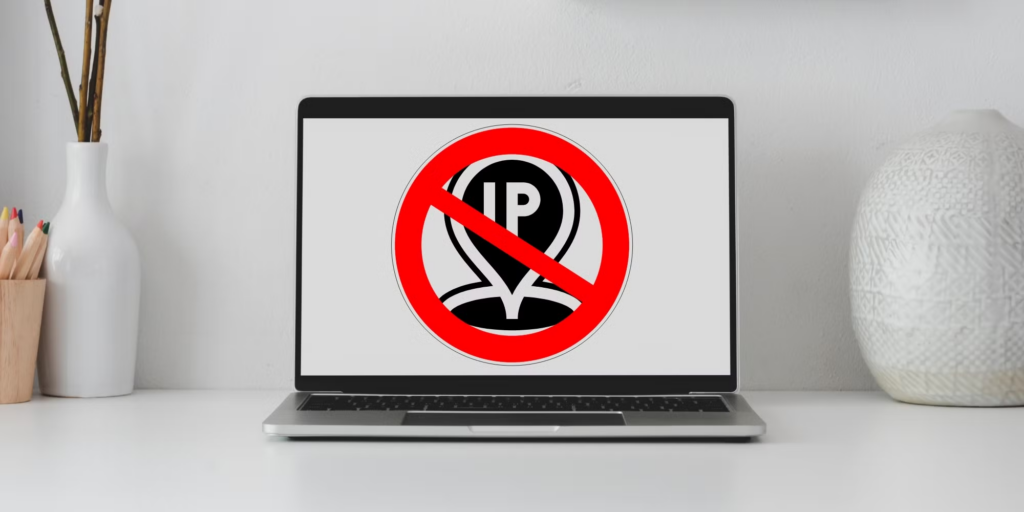
An IP block might seem like a minor inconvenience, but it can have significant consequences:
- Access Denied: You won’t be able to use essential services or access important information.
- Disrupted Workflow: If you rely on a website for work or business, an IP block can cause delays and lost productivity.
- Long-Term Risks: Repeated blocks could lead to a permanent ban, making it even harder to regain access.
The bottom line? Fixing an IP block quickly is crucial. Let’s dive into how you can do just that.
7 Steps to Fix an IP Block Instantly

Here’s a step-by-step guide to resolving an IP block and getting back online:
Step 1: Identify the Cause
The first step is to figure out why your IP was blocked. Check the error message for clues, or contact the website’s support team for more information.
Pro Tip: If you’re unsure, think about your recent online activity. Did you refresh a page too many times, or use a bot?
Step 2: Restart Your Router
If you’re using a dynamic IP (common with most ISPs), restarting your router can often assign you a new IP address.
How to Do It:
- Turn off your router.
- Wait for 5-10 minutes.
- Turn it back on and check your IP address using a tool like WhatIsMyIP.
Step 3: Clear Your Browser Cache and Cookies
Sometimes, websites block IPs based on tracking data stored in your browser. Clearing your cache and cookies can help.

How to Clear Cache and Cookies:
- In Chrome: Go to Settings > Privacy and Security > Clear Browsing Data.
- In Safari: Go to Preferences > Privacy > Manage Website Data.
Step 4: Use a VPN or Proxy Service
A VPN or proxy service can mask your IP address and help you bypass the block. Proxies like Proxy302 are particularly effective because they offer:
- Over 65M IPs globally to ensure you never run out of options.
- City-level targeting with residential proxies for precise access.
- A pay-as-you-go model, so you only pay for what you use—no expensive monthly subscriptions.
Example Use Case: If you’re blocked from accessing a geo-restricted website, Proxy302 can assign you an IP from a location where access is allowed.
Related Reading: VPN or Proxy: What’s Best for Your Needs in 2025?
Step 5: Contact the Website Administrator
If you believe the block was a mistake, reach out to the website’s support team and request to have your IP unblocked. Be polite and explain your situation clearly.
Step 6: Wait It Out
If the block is temporary, sometimes the best solution is patience. Most temporary blocks lift within 24-48 hours.
Step 7: Prevent Future Blocks
Prevention is always better than cure. Here’s how to avoid getting blocked in the future:
- Use Proxies for High-Volume Tasks: If you’re scraping data or automating tasks, use Proxy302 to distribute your requests across multiple IPs.
- Monitor Your Activity: Avoid suspicious or bot-like behavior.
- Stay Within Limits: Respect a website’s rate limits and terms of service.
How Proxy302 Can Help You Avoid IP Blocks
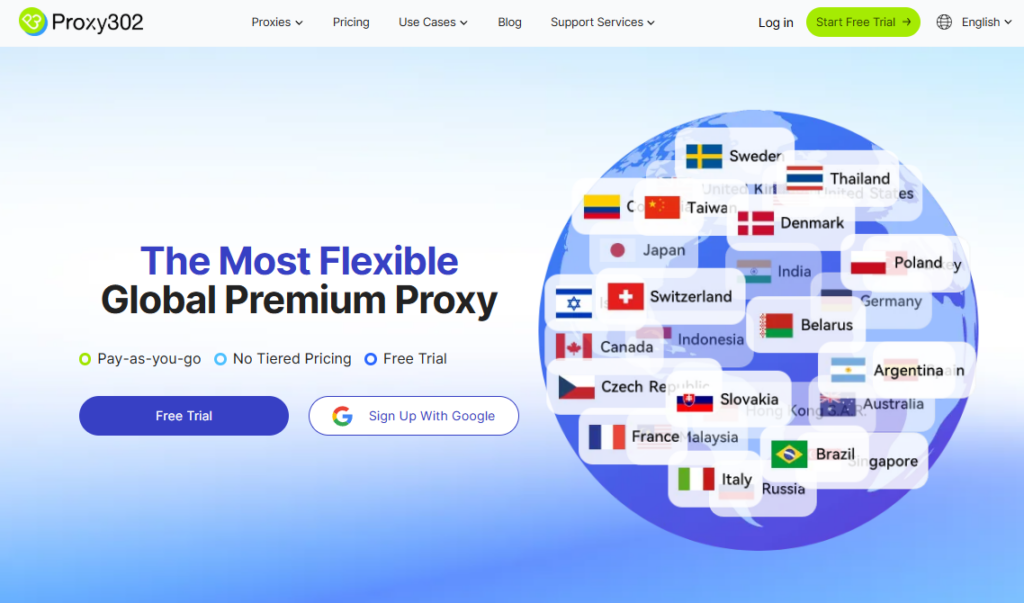
Proxy302 is a game-changer when it comes to bypassing and preventing IP blocks. Here’s why:
- Massive IP Pool: With over 65M IPs globally, Proxy302 ensures you always have a fresh IP to use.
- Comprehensive Proxy Types: Choose from residential, datacenter, or mobile proxies, with city-level targeting for precise access.
- Flexible Pricing: Forget expensive monthly subscriptions! Proxy302 offers a pay-as-you-go model, so you only pay for what you need.
Practical Example:
Imagine you’re running a business that relies on web scraping to gather market data. Without proxies, your IP could get blocked quickly. With Proxy302, you can rotate your IPs seamlessly, ensuring uninterrupted access and compliance with website rules.
Some additional tips to keep your IP safe:
- Use Rotating Proxies: Proxy302’s rotating proxy feature automatically changes your IP, making it harder for websites to detect and block you.
- Stay Anonymous: Proxies hide your real IP, protecting your identity and location.
- Access Geo-Restricted Content: With Proxy302, you can bypass regional restrictions and access content from anywhere in the world.
Conclusion
Getting your IP blocked can be frustrating, but it’s not the end of the world. By understanding the causes and following the steps outlined above, you can resolve the issue quickly and prevent it from happening again.
And if you’re looking for a foolproof way to bypass and avoid IP blocks, Proxy302 is the solution you need. 👉 Start Your Free Trial Now 👈and see the difference for yourself. Don’t let IP blocks hold you back—take control of your online experience with Proxy302!


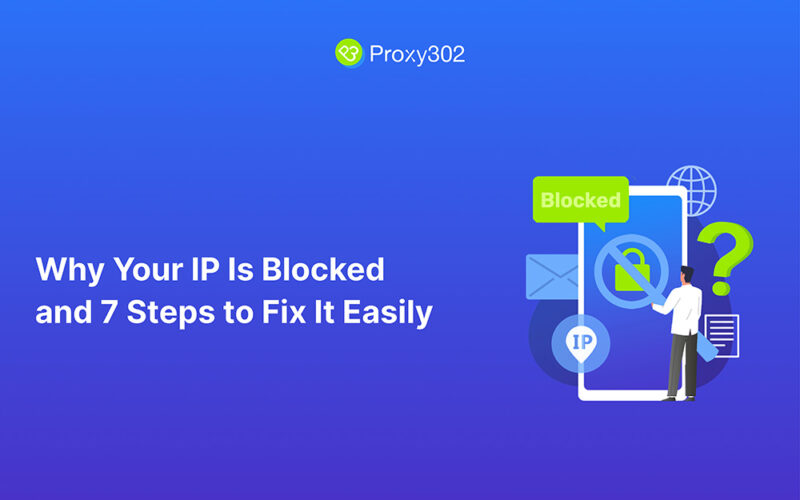
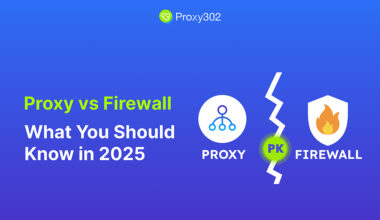
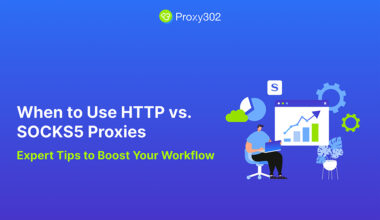
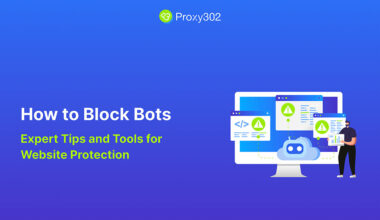
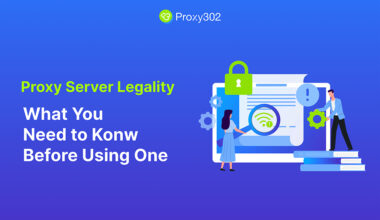
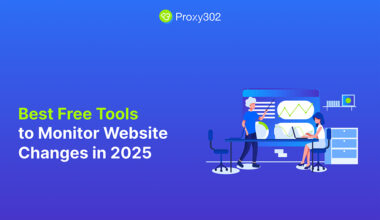
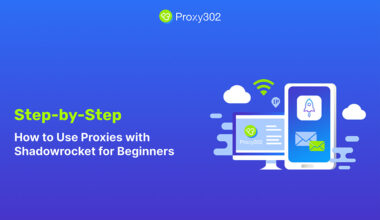
2 comments
Your article helped me a lot, is there any more related content? Thanks!
Thank you for your sharing. I am worried that I lack creative ideas. It is your article that makes me full of hope. Thank you. But, I have a question, can you help me?